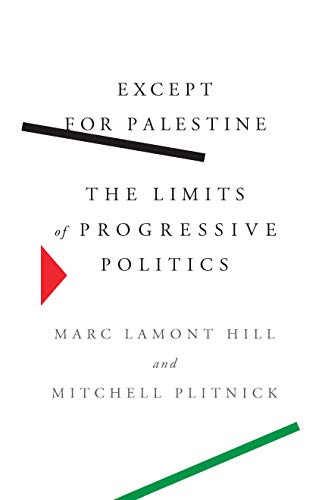Azadi: Freedom, Fascism, Fiction, Arundhati Roy, Hamish Hamilton, 2020, pp. 243, ISBN: 9780735240766
Depending on the context of its usage, the word azadi means independence, freedom, or liberty. Its origin lies in Persia, and its slow eastward movement began after the Iranian Revolution of 1979 when the crowds brought down the Shah. After, it was taken up as the rallying cry of many movements seeking to combat injustice – most notably in Kashmir, where it can be heard during protests, marches, and funerals of those killed. Hum kya chahte? Azadi (what do we want? Freedom) has been the cry of Kashmiris fighting the Indian military occupation of the valley.
In her latest collection of speeches and essays, written and delivered between 2018 and 2020, Arundhati Roy uses the idea of azadi to examine layers of oppression existing in Indian society. Azadi ties Roy’s non-fiction and fiction and allows her to use her novels, The God of Small Things and Ministry of Utmost Happiness, to analyze the budding fascism developing in India with the rise of the BJP. Her fiction represents the lived Indian reality, and her characters are suffused with social injustice and exist on the margins of society, yet their marginalization pierces through its fabric. Be it the transgressive relationship between the Syrian Christian Ammu and the untouchable Velutha in The God of Small Things, through which she examines the issues of caste and class, or the characters blurring the boundaries of sex, caste, religion and language, as is the case with Anjum, Saddam Hussein and Tilo in The Ministry, Roy’s literature is firmly on the side of the oppressed. Her freedom to violate politically set social boundaries, which are used as an excuse to enforce and reproduce rigid hierarchies, with her literature broadens the horizons of the possible and reimagines the world. Her works fight against the Hindutva imposed idea of India as Hindi, Hindu, Hindustan – one language, one religion, one nation – a doctrine that wishes to impose uniformity on a subcontinent more diverse than all of Europe.
Indian occupation of Kashmir, the violence meted out against Muslims, Hinduization of India and machinations by politicians belonging to the BJP loom large in Arundhati Roy’s talks and essays. Kashmir is used to stir up nationalist pride and anger at Pakistan, only to manipulate it for political gain, which the occupied Kashmiris are forced to suffer. With Section 7(1)(b) of the Indian Independence Act, 1947, states of Jammu and Kashmir ceased to be under British suzerainty and became free to join either the Dominion of Pakistan or Union of India. Having separated based on religious affiliation, Pakistan for the Muslims and India for Hindus, the territories of Jammu and Kashmir exemplified the absurdity of the Independence; a Hindu ruler, Maharaja Hari Singh, ruled over a Muslim majority population. Historically, Kashmir Valley and Ladakh Wizarat were bought by the founder of the Dogra dynasty Maharaja Gulab Singh for 7.5 million rupees, whose rule afforded more rights to Hindus than to Muslims. The Dogras quelled many uprisings by Muslim subjects with the help of the British, and once the British left, the power vacuum left the Dogras exposed. Following the Independence, both India and Pakistan attempted to force the ruler and the subjects, respectively, to accede to their countries. When Pakistan launched an invasion, “Operation Gulmarg,” in October 1947, Maharaja Hari Singh appealed to India for military help. At Lord Mountbatten’s urging, Indian leaders offered their help to the Maharaja on the condition that he signs the Instrument of Accession. Thus Kashmir is currently split between Pakistani-occupied Azad Kashmir and Indian-occupied Kashmir Valley.
The Delhi Agreement of 1952 gave Jammu and Kashmir greater autonomy within India, enshrined in Article 370 of the Indian Constitution. The special status granted the State Legislature greater powers and kept the Center at a distance. From the beginning, the issue of Jammu and Kashmir was at the center of nationalist ideology, with Sangh Parivar and its successor BJP codifying their ideology in three demands in 1989: uniform civil code, which was to abolish Muslim personal law allowing Indian Muslims the ability to govern their relations through Sharia law, a Ram temple in place of a 16th-century mosque Babri Masjid, and repealing of Article 370. By 2019, major steps were taken in this direction following the rise to prominence of Hindu extremists gathered around the BJP and the RSS, an organization that modelled itself on Mussolini’s blackshirts and whose founders expressed open admiration for Hitler. In August 2017, the Supreme Court of India declared an Islamic divorce practice criminal, and by that time, Babri Masjid had been demolished in an orgy of violence. In August 2019, the Modi government introduced a bill that revoked Article 370, following through on its election promise, separating the province and imposing direct control from the Center. Before introducing the Act, the government slyly transferred massive amounts of military men (50 thousand) and equipment to the region and ordered all tourists and pilgrims to leave the region immediately, ready to further clamp down on the population that has resisted the occupation for half a century. When thousands of unmarked graves were discovered in the province in 2009, it confirmed the practice of extrajudicial killing, disappearances, rape, and torture meted out by the Indian army. Mass insurrection by Kashmiris was used as an excuse by the Army to elevate itself above the law and rule with impunity.
Thus in August 2019 began the world’s longest security lockdown that only officially ended in February 2021. The Modi government arrested 4000 people within a month of revoking Article 370, including politicians, former Chief Ministers and activists from the All Parties Hurriyat Conference, an alliance of civil society movements. Internet blackout lasted seven months and was only restored in March 2020, albeit with a government-controlled firewall filtering what can and cannot be seen. Mobile phone services were suspended for 2.5 million users and slowly reintroduced months after. To quell any resistance, Indian security forces use pellet guns which leave many people maimed. The UN reports that between mid-2016 and the end of 2018, 1253 have been blinded by the metal pellets. “Cordon and search” operations in civilian populations ensure the continued support for the militants by ordinary Kashmiris, further pitting the State against the people. In her essays and in her talks, Arundhati Roys poetically describes these injustices, attuned to the will of the people of Kashmir. She eulogizes the densest military occupation in the world.
This is what the Saffron Agenda looks like, and its implementation is reshaping India, further marginalizing the marginalized. On December 12, 2019, the government passed the Citizenship Amendment Act, which fast tracks citizenship applications from non-Muslim refugees from Afghanistan, Pakistan, and Bangladesh. Massive protests that rocked the country failed to affect the government who instead unleashed police on the protesters, focusing on the Muslim working-class areas in North Delhi and Shaheen Bagh. In Uttar Pradesh and Karnataka, 27 people were killed in the violence. Using the powers conferred by the Unlawful Activities (Prevention) Act, the government arrested activists and civil society leaders for “anti-national activities.” Earlier, in 2017, an Indian journalist critical of right-wing extremism and caste, Gauri Lankesh, was killed outside her home.
As the protests were unfolding, the government introduced new funding for the National Population Register (NPR), which forms the first step to creating the National Register of Citizens (NRC). NRC will be used to distinguish citizens from non-citizens. Roy rightly sees these as attempts to advance Hindutva ideology at the expense of non-Hindus and the poor. If a person can’t provide “legacy documents” proving their connection to the land before March 1971, they would be deemed an infiltrator. Naturally, the vast majority of the poor will not have the requisite papers. In Assam, the NRC list was published in August 2019, and the names of 1.9 million people were missing. It remains to be seen what their fate will be. For her part, Roy likens the NRC to Germany’s 1935 Nuremberg Laws.
Roy suggests that India has colonized itself. Her work chronicles the rise of nationalism in India and abroad in all its brutality and absurdity, from demonetization to “Howdy Modi” events. Her words are soft, but they pierce through the mantle of fascism. She is not afraid to stand with the oppressed, walk with the comrades, and lend them her voice.




